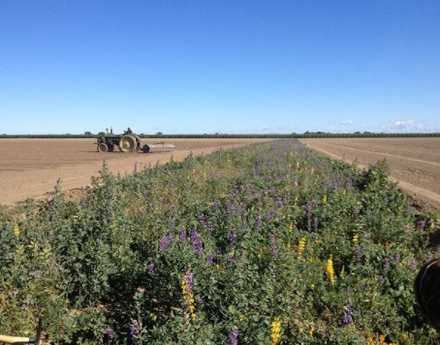By Sarah Cafasso
New paper highlights the benefits of cost-sharing the conservation of wild bee habitats on agricultural lands, especially in small-scale farming communities, in an effort to overcome the tragedy of the commons.
Many farmers are used to sharing big equipment—like tractors and other costly machinery—with neighboring farms. Sharing cuts costs, lowers the farmer’s debt load, and increases community. But big machinery might not be the only opportunity for farmers to reap the benefits of cost-sharing with their neighbors. New research suggests that the concept could also be applied to a more lively kind of agricultural resource—wild bees.
“Understandably, farmers with highly valuable crops don’t always want to give up plantable space to create habitats for wild bees, especially if their crops could be pollinated by a neighbor’s bees for free,” said Eric Lonsdorf, lead scientist for the Natural Capital Project at the University of Minnesota’s Institute on the Environment and lead author on the paper. “What we’re proposing is that those farmers providing bee habitat could be rewarded for doing so, to the benefit of all.”
The research, published in People and Nature, was done in collaboration with scientists at the University of Vermont. The team applied their work to the fields of California’s Central Valley, one of the nation’s top agricultural areas. They combined wild bee ecology, crop values, and land ownership patterns to reveal the benefits to landowners of restoring bee habitats. In Yolo County, where bee-dependent crops like berries and nuts are worth thousands of dollars per acre, every inch of land counts.
“Bees don’t pay attention to land boundaries,” said Lonsdorf. “In the current system, farmers who choose to conserve habitat for bees on their lands are rarely recognized for the pollination benefits that they’re also providing to their neighbors.”
